Stefan Heldmann
The ACROBAT 2022 Challenge: Automatic Registration Of Breast Cancer Tissue
May 29, 2023Abstract:The alignment of tissue between histopathological whole-slide-images (WSI) is crucial for research and clinical applications. Advances in computing, deep learning, and availability of large WSI datasets have revolutionised WSI analysis. Therefore, the current state-of-the-art in WSI registration is unclear. To address this, we conducted the ACROBAT challenge, based on the largest WSI registration dataset to date, including 4,212 WSIs from 1,152 breast cancer patients. The challenge objective was to align WSIs of tissue that was stained with routine diagnostic immunohistochemistry to its H&E-stained counterpart. We compare the performance of eight WSI registration algorithms, including an investigation of the impact of different WSI properties and clinical covariates. We find that conceptually distinct WSI registration methods can lead to highly accurate registration performances and identify covariates that impact performances across methods. These results establish the current state-of-the-art in WSI registration and guide researchers in selecting and developing methods.
Learn2Reg: comprehensive multi-task medical image registration challenge, dataset and evaluation in the era of deep learning
Dec 23, 2021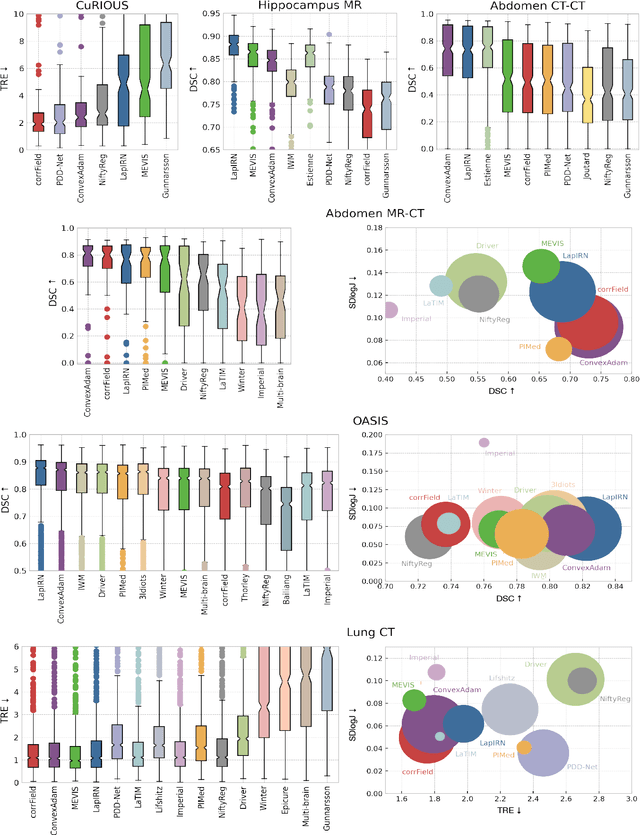
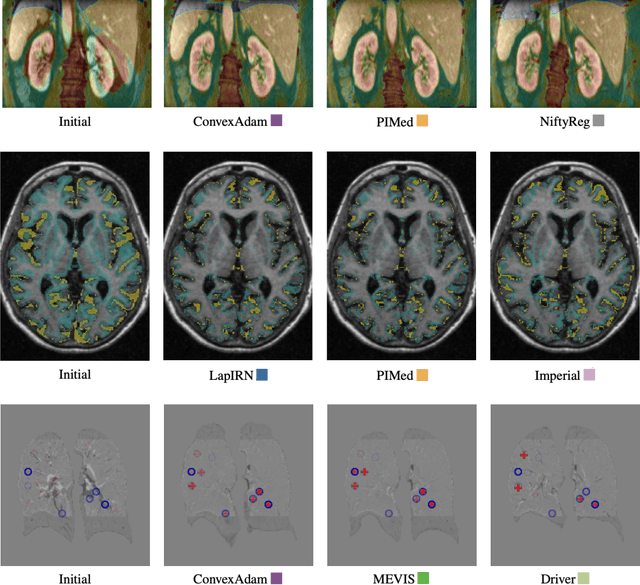
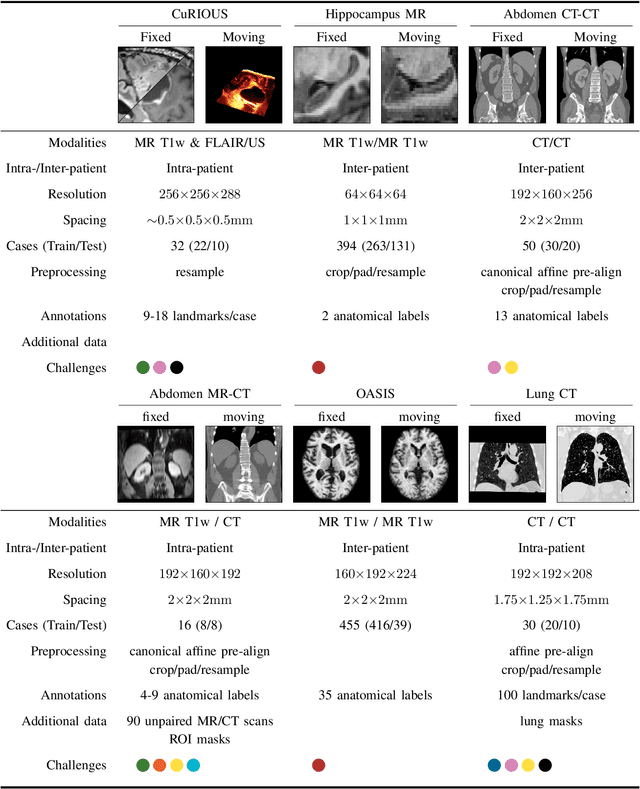
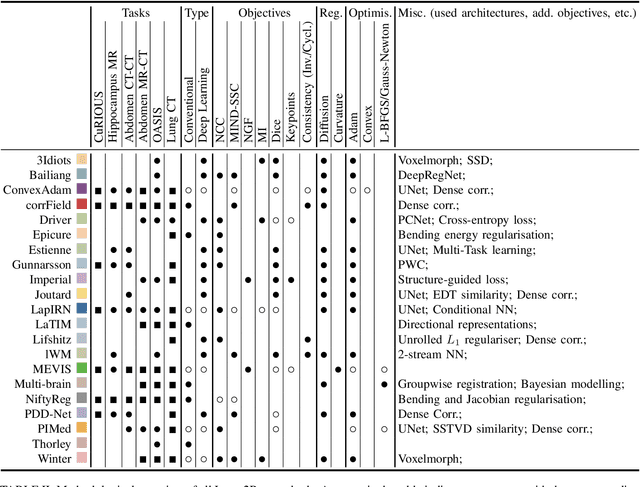
Abstract:Image registration is a fundamental medical image analysis task, and a wide variety of approaches have been proposed. However, only a few studies have comprehensively compared medical image registration approaches on a wide range of clinically relevant tasks, in part because of the lack of availability of such diverse data. This limits the development of registration methods, the adoption of research advances into practice, and a fair benchmark across competing approaches. The Learn2Reg challenge addresses these limitations by providing a multi-task medical image registration benchmark for comprehensive characterisation of deformable registration algorithms. A continuous evaluation will be possible at https://learn2reg.grand-challenge.org. Learn2Reg covers a wide range of anatomies (brain, abdomen, and thorax), modalities (ultrasound, CT, MR), availability of annotations, as well as intra- and inter-patient registration evaluation. We established an easily accessible framework for training and validation of 3D registration methods, which enabled the compilation of results of over 65 individual method submissions from more than 20 unique teams. We used a complementary set of metrics, including robustness, accuracy, plausibility, and runtime, enabling unique insight into the current state-of-the-art of medical image registration. This paper describes datasets, tasks, evaluation methods and results of the challenge, and the results of further analysis of transferability to new datasets, the importance of label supervision, and resulting bias.
Constraining Volume Change in Learned Image Registration for Lung CTs
Nov 29, 2020



Abstract:Deep-learning-based registration methods emerged as a fast alternative to conventional registration methods. However, these methods often still cannot achieve the same performance as conventional registration methods, because they are either limited to small deformation or they fail to handle a superposition of large and small deformations without producing implausible deformation fields with foldings inside. In this paper, we identify important strategies of conventional registration methods for lung registration and successfully developed the deep-learning counterpart. We employ a Gaussian-pyramid-based multilevel framework that can solve the image registration optimization in a coarse-to-fine fashion. Furthermore, we prevent foldings of the deformation field and restrict the determinant of the Jacobian to physiologically meaningful values by combining a volume change penalty with a curvature regularizer in the loss function. Keypoint correspondences are integrated to focus on the alignment of smaller structures. We perform an extensive evaluation to assess the accuracy, the robustness, the plausibility of the estimated deformation fields, and the transferability of our registration approach. We show that it archives state-of-the-art results on the COPDGene dataset compared to the challenge winning conventional registration method with much shorter execution time.
Deformable Groupwise Image Registration using Low-Rank and Sparse Decomposition
Jan 10, 2020

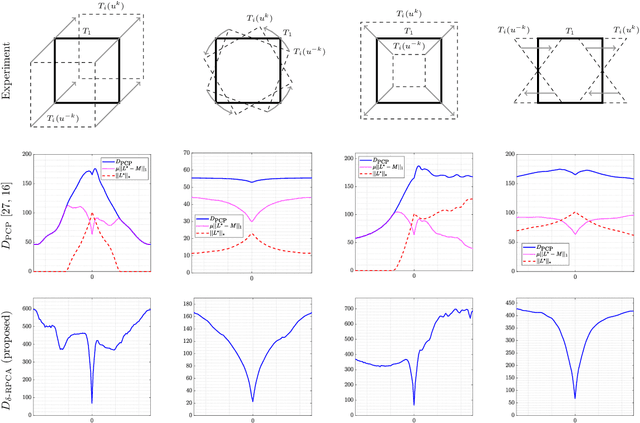

Abstract:Low-rank and sparse decompositions and robust PCA (RPCA) are highly successful techniques in image processing and have recently found use in groupwise image registration. In this paper, we investigate the drawbacks of the most common RPCA-dissimi\-larity metric in image registration and derive an improved version. In particular, this new metric models low-rank requirements through explicit constraints instead of penalties and thus avoids the pitfalls of the established metric. Equipped with total variation regularization, we present a theoretically justified multilevel scheme based on first-order primal-dual optimization to solve the resulting non-parametric registration problem. As confirmed by numerical experiments, our metric especially lends itself to data involving recurring changes in object appearance and potential sparse perturbations. We numerically compare its peformance to a number of related approaches.
mlVIRNET: Multilevel Variational Image Registration Network
Sep 22, 2019


Abstract:We present a novel multilevel approach for deep learning based image registration. Recently published deep learning based registration methods have shown promising results for a wide range of tasks. However, these algorithms are still limited to relatively small deformations. Our method addresses this shortcoming by introducing a multilevel framework, which computes deformation fields on different scales, similar to conventional methods. Thereby, a coarse-level alignment is obtained first, which is subsequently improved on finer levels. We demonstrate our method on the complex task of inhale-to-exhale lung registration. We show that the use of a deep learning multilevel approach leads to significantly better registration results.
Variational Registration of Multiple Images with the SVD based SqN Distance Measure
Jul 23, 2019
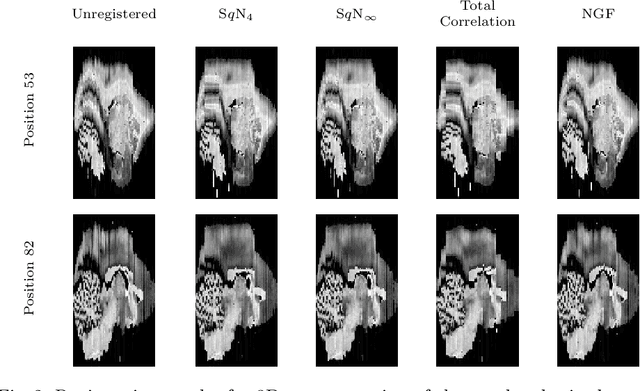
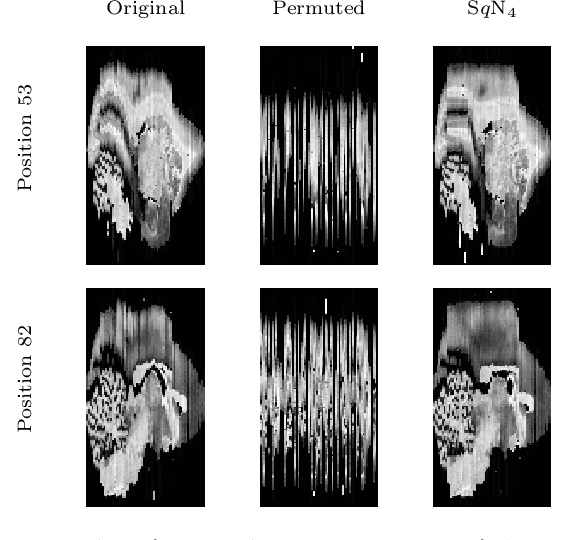
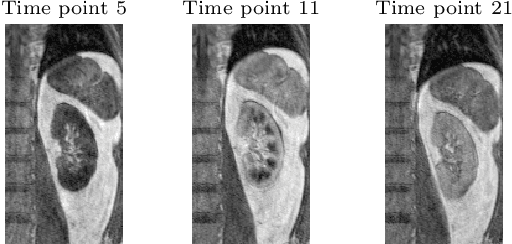
Abstract:Image registration, especially the quantification of image similarity, is an important task in image processing. Various approaches for the comparison of two images are discussed in the literature. However, although most of these approaches perform very well in a two image scenario, an extension to a multiple images scenario deserves attention. In this article, we discuss and compare registration methods for multiple images. Our key assumption is, that information about the singular values of a feature matrix of images can be used for alignment. We introduce, discuss and relate three recent approaches from the literature: the Schatten q-norm based SqN distance measure, a rank based approach, and a feature volume based approach. We also present results for typical applications such as dynamic image sequences or stacks of histological sections. Our results indicate that the SqN approach is in fact a suitable distance measure for image registration. Moreover, our examples also indicate that the results obtained by SqN are superior to those obtained by its competitors.
Robust, fast and accurate: a 3-step method for automatic histological image registration
Mar 29, 2019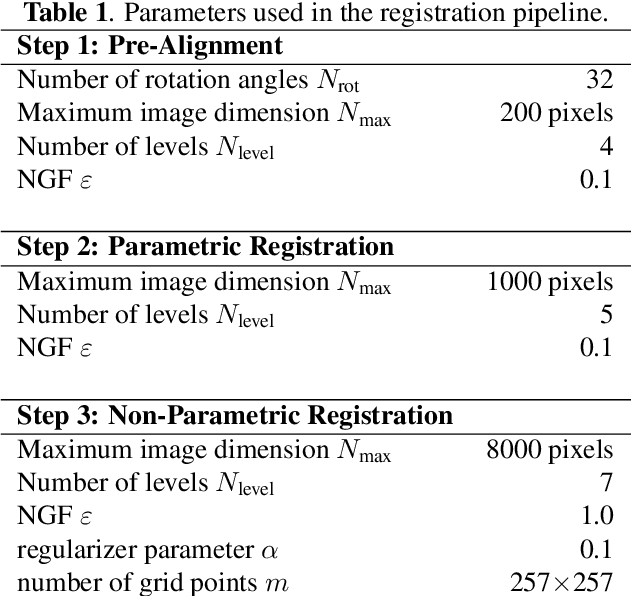
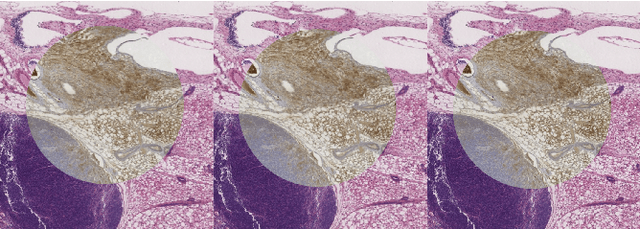
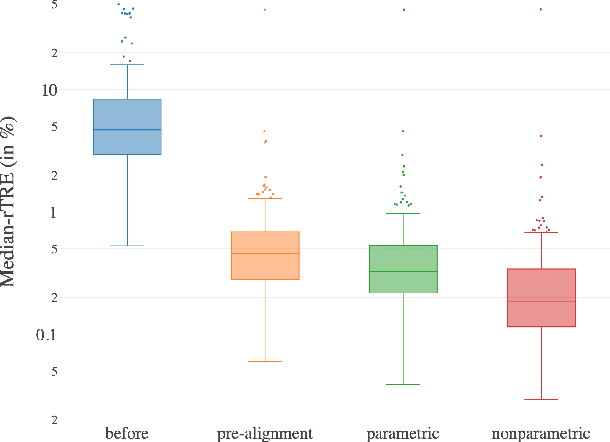
Abstract:We present a 3-step registration pipeline for differently stained histological serial sections that consists of 1) a robust pre-alignment, 2) a parametric registration computed on coarse resolution images, and 3) an accurate nonlinear registration. In all three steps the NGF distance measure is minimized with respect to an increasingly flexible transformation. We apply the method in the ANHIR image registration challenge and evaluate its performance on the training data. The presented method is robust (error reduction in 99.6% of the cases), fast (runtime 4 seconds) and accurate (median relative target registration error 0.19%).
Enhancing Label-Driven Deep Deformable Image Registration with Local Distance Metrics for State-of-the-Art Cardiac Motion Tracking
Dec 05, 2018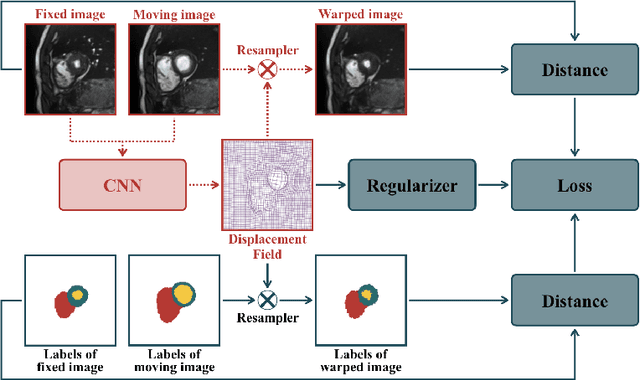
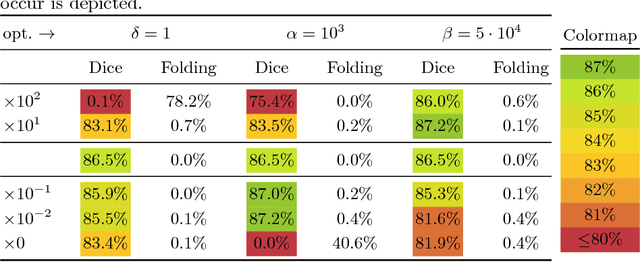
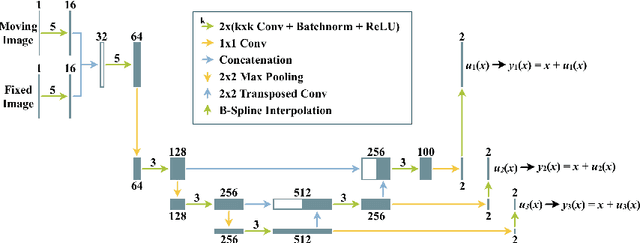
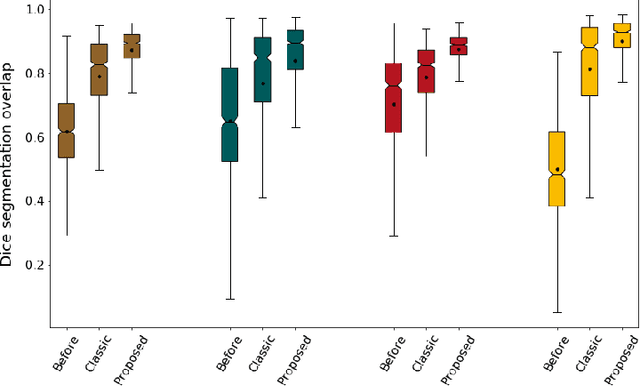
Abstract:While deep learning has achieved significant advances in accuracy for medical image segmentation, its benefits for deformable image registration have so far remained limited to reduced computation times. Previous work has either focused on replacing the iterative optimization of distance and smoothness terms with CNN-layers or using supervised approaches driven by labels. Our method is the first to combine the complementary strengths of global semantic information (represented by segmentation labels) and local distance metrics that help align surrounding structures. We demonstrate significant higher Dice scores (of 86.5\%) for deformable cardiac image registration compared to classic registration (79.0\%) as well as label-driven deep learning frameworks (83.4\%).
Estimation of Large Motion in Lung CT by Integrating Regularized Keypoint Correspondences into Dense Deformable Registration
Jul 02, 2018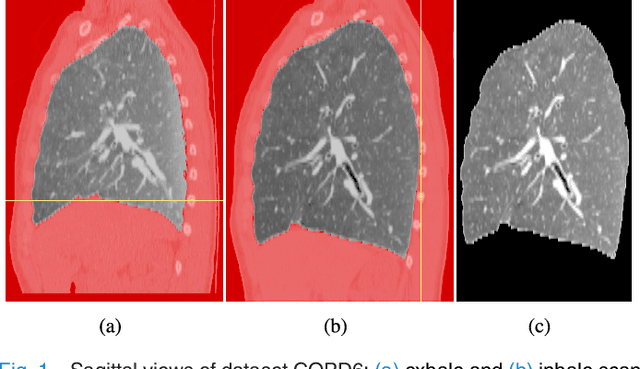
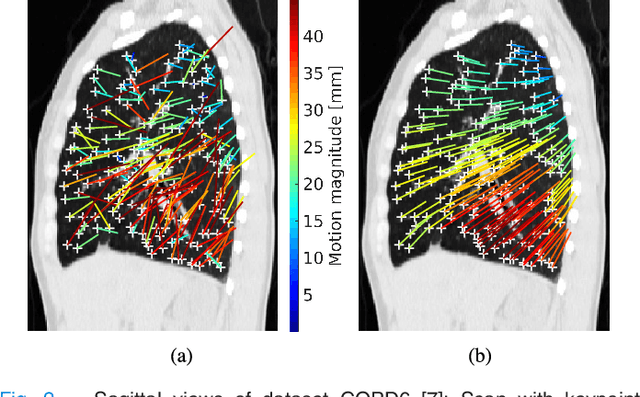
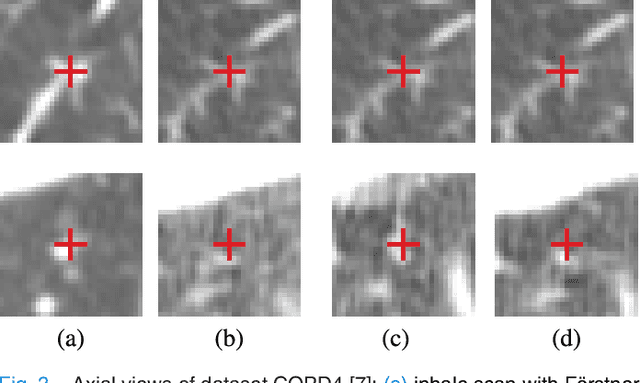
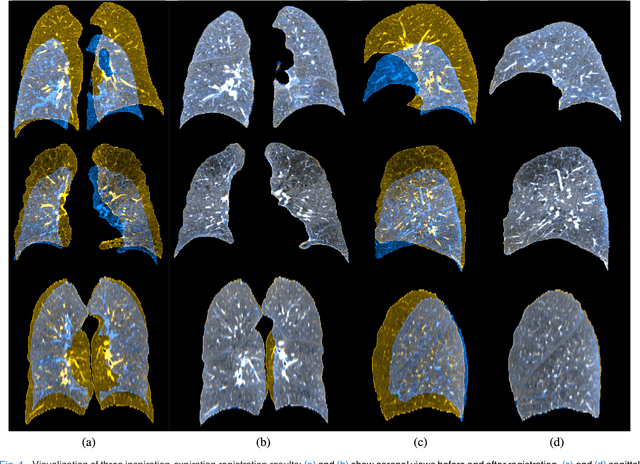
Abstract:We present a novel algorithm for the registration of pulmonary CT scans. Our method is designed for large respiratory motion by integrating sparse keypoint correspondences into a dense continuous optimization framework. The detection of keypoint correspondences enables robustness against large deformations by jointly optimizing over a large number of potential discrete displacements, whereas the dense continuous registration achieves subvoxel alignment with smooth transformations. Both steps are driven by the same normalized gradient fields data term. We employ curvature regularization and a volume change control mechanism to prevent foldings of the deformation grid and restrict the determinant of the Jacobian to physiologically meaningful values. Keypoint correspondences are integrated into the dense registration by a quadratic penalty with adaptively determined weight. Using a parallel matrix-free derivative calculation scheme, a runtime of about 5 min was realized on a standard PC. The proposed algorithm ranks first in the EMPIRE10 challenge on pulmonary image registration. Moreover, it achieves an average landmark distance of 0.82 mm on the DIR-Lab COPD database, thereby improving upon the state of the art in accuracy by 15%. Our algorithm is the first to reach the inter-observer variability in landmark annotation on this dataset.
* 12 pages, 7 figures, \c{opyright} 2017 IEEE. Personal use is permitted, but republication/redistribution requires IEEE permission
 Add to Chrome
Add to Chrome Add to Firefox
Add to Firefox Add to Edge
Add to Edge